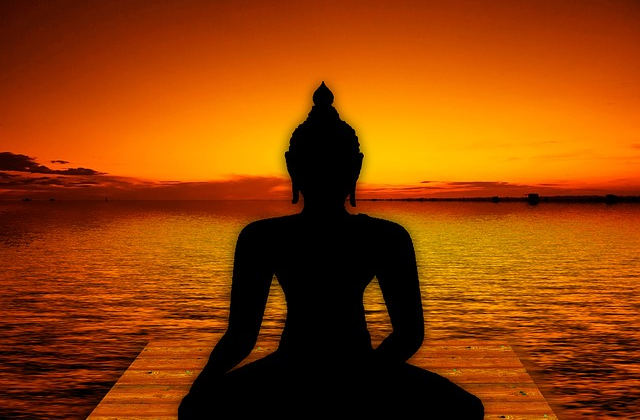Create Your Own Style of Meditating
Most people think of formal meditation as sitting in a crossed-legged position, with your eyes closed, and palms up resting on your legs. In reality, there are many forms of meditation and it is important for you to find the right practice that works for you. Having a variety of options to choose from allows you to choose the type of experience you want to have in a particular moment, which allows you to be more engaged in your meditation practice. The goal of any meditation practice is to be present and mindful. How you choose to practice being present is really up to you. The important thing to remember is that there is no wrong way to meditate. Meditation is a personal experience and these are only suggestions on ways that you can meditate. Create your own style of meditating. Don’t limit yourself by trying to find the “proper” position. There is no proper position to meditate in. There is only the position that works for you.
How long should you meditate?
Research shows that meditating for at least 20 minutes allows you to reap the benefits of meditation, giving yourself time to really disengage from your thoughts. In the Mindfulness Based Stress Reduction course, 45 minutes of formal meditation daily is what is recommended and found to be the most effective. However any amount of time you are able to meditate, even if you only have 5 minutes, is still a benefit to your body and mind.
1. Body Scan Meditation
The body scan meditation is usually practiced lying down, however you can also do it in a seated position. You start off by closing your eyes and taking a few breaths to help you focus on the present moment. You then shift your focus to the big toe of your left foot, then move your attention to your other toes of your left foot, then your whole foot, ankle, lower leg, knee, thigh, and hip (about 10 minutes). Pausing at each body part for several breaths, noticing what you feel. Not judging what you feel, whether pain or pleasure, but just noticing what is there and breathing. You then move to the right big toe and go slowly up the right side of the lower body (about 10 minutes). Continue to the left upper body–left fingers, hand, lower arm, upper arm, shoulder (about 5 minutes). Moving up the center of your body starting with genitals, pelvis, belly, lower back, chest, upper back, neck (about 10 minutes). And then the right side of the upper body (about 5 minutes). Finishing at the face (chin, cheeks, nose, eyes, forehead, ears) and head (about 5 minutes).
Since usually this is done lying down, your chances of falling asleep are high, so make sure you do this at a time that you are most likely to stay awake. The first few times you practice this type of meditation, you will probably fall in and out of sleep and your mind will probably wander a lot. That is normal. Just bring your focus back to your body and your breath. The more you practice, the more you will be able to focus for longer periods of time and the more you will be able to let go of judging the sensations you are feeling and allow whatever is there to just be there.
2. Seated Meditation
The seated meditation is the most common form of meditation practiced. Find a seated position that will allow you to breathe freely, be alert and be present. During seated meditation, your main focus is your breath, which anchors you to the present moment. Feelings, thoughts, and sensations, will all come and go during your meditation practice. Be aware of them, notice them and then let them float away, like clouds moving across the sky or waves in an ocean. Let them pass through you and then return your awareness back to your breathing.
For me, seated meditation does not work because my back starts hurting after just a few minutes, which hinders my ability to focus on my breath. Therefore I do seated meditation lying down on my back with my knees bent to release the pressure off my lower back. Leaning your back against the wall, sitting on cushions, sitting in a chair, or even lying down in the astronaut position, where your legs are bent and your calves are laying on a chair are just some other options.
3. Mindful Movement Meditation
Mindful movement allows you to connect your body, mind, and breath as you move your body into different positions. It can be as simple as stretching exercises, but can also include doing some light yoga to regular yoga poses, bringing awareness to the body and noticing the different sensations as you move. Yoga is meditation and it is mindful movement. If you practice yoga, give yourself credit for already meditating. Even better if you are able to practice yoga poses without someone guiding you, which allows you to really focus on yourself and not worry about following someone’s voice. Mindful movement does not have to include certain poses. The movements you choose should be whatever you think your body needs in this moment and whatever will allow you to stay focused on the present, trying to keep the mind clear of thoughts and bringing awareness to the body and breath. Remember to be compassionate with your body and not push it beyond what it is capable of in this moment. Remembering that every moment is different.
4. Walking Meditation
Walking meditation is also a type of meditation that incorporates movement and therefore decreases your chances of getting sleepy. In this type of meditation your main focus is on your breath and the feeling of your feet on the ground as you walk slowly with your gaze just about a foot in front of you. The repetitive action of walking, without any particular place to go, is soothing and allows you to be with yourself in the present moment. Even if you don’t have time to practice a formal walking meditation, try walking mindfully when you are walking from your car to the house or from the car to work. It is a great practice that can help you transition between different parts of your day and help you be more present for them.
Need some guided meditations to get you started?
Check out the University of California San Diego Mindfulness Based Stress Reduction guided audios at http://health.ucsd.edu/specialties/mindfulness/mbsr/Pages/audio.aspx . These were the guided meditations that we were required to practice for our homework assignments while taking the course. We were encouraged to practice 45 minutes every day, with the goal being to eventually not use the guided audios and to create our own meditation practice. My favorite way to meditate is actually doing a combination of body scan, seated meditation (but on my back), and mindful movement all in one 45 minute session. Create your own meditation practice that works for you.
“Meditation doesn’t have to be complicated. What I do is about as simple as you can get. You could just count the beads, one, two, three, with your eyes closed or open, whatever makes you happy.” ~Lou Reed






